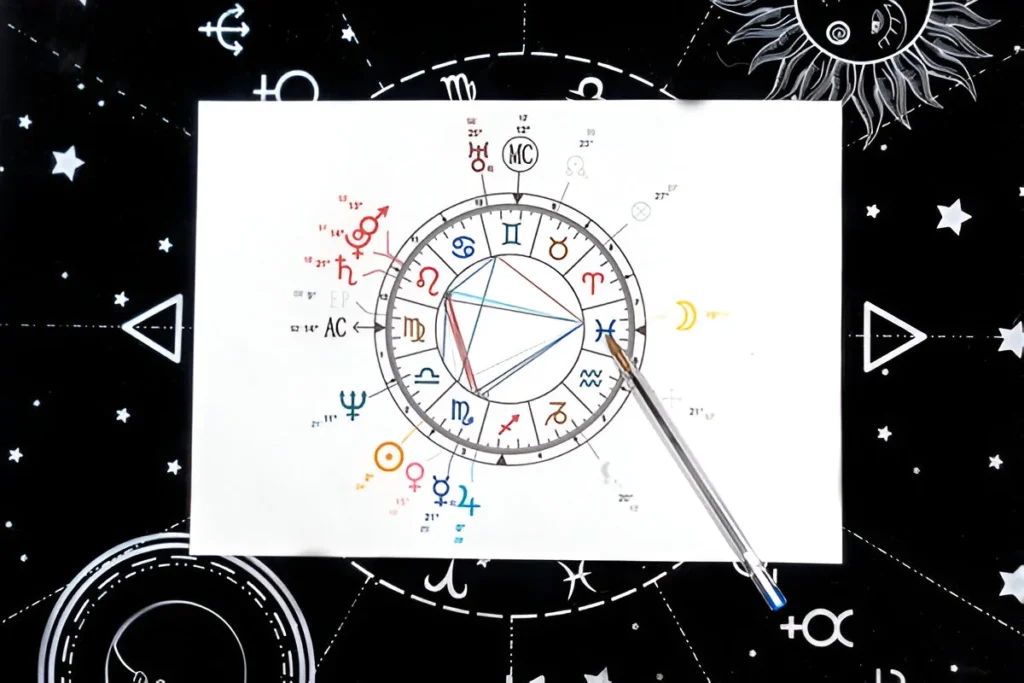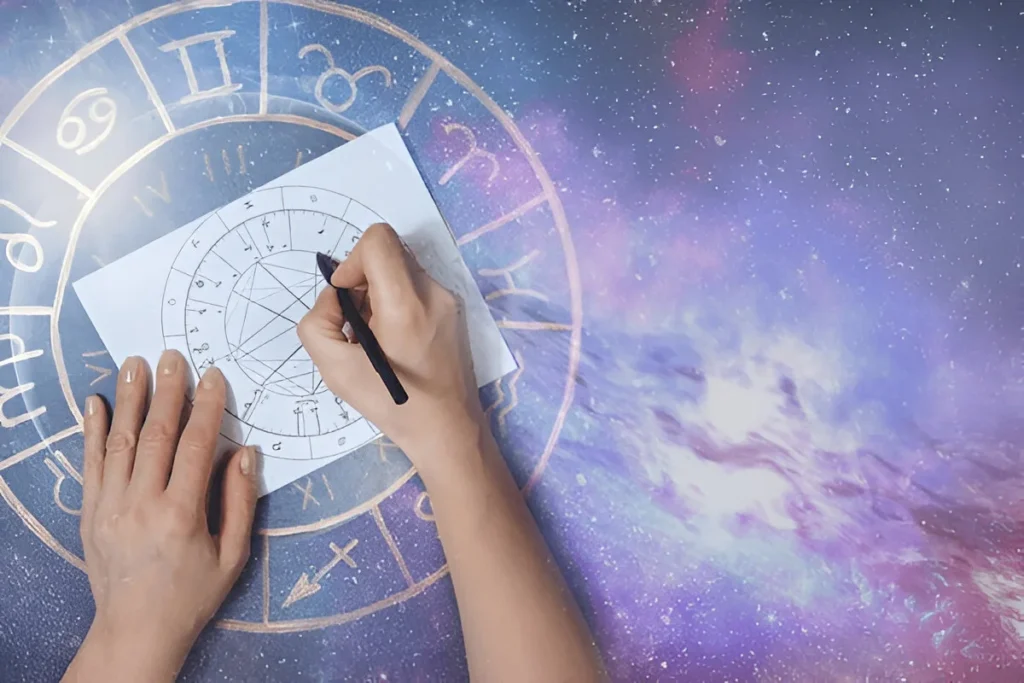Read your natal chart confidently with 5 clear steps, guided by expert-backed astrology techniques and advanced astrology books for astrologer-level insights.
Astrology can seem like a mystical language reserved for seasoned practitioners, but the truth is, you don’t need to be an expert to read your natal chart. With a little patience, the right resources, and a basic understanding of astrological principles, anyone can unlock the secrets encoded in their birth map.
This guide offers a simplified, human-centric approach to help you read your natal chart step by step. Drawing upon techniques used in some of the most advanced astrology books for astrologers, you’ll learn how to identify the key components of your chart and interpret their influence with clarity and confidence.

Your natal chart, also known as a birth chart, is a snapshot of the sky at the exact moment and location of your birth. It maps the positions of the planets, Sun, Moon, and other celestial bodies, showing how their energies interact and influence your personality, purpose, and life events.
Think of it as your personal celestial blueprint—one that outlines your strengths, challenges, emotions, motivations, and even karmic patterns.
Understanding your natal chart can:
Whether you’re a curious beginner or diving deeper with advanced astrology books for astrologers, interpreting your own chart is an empowering skill that deepens self-awareness.

Here’s a breakdown of five simple steps to help you decode your chart without getting overwhelmed.
Before you begin, make sure you have the following:
These details are essential because even a few minutes’ difference can change the chart significantly—especially the Ascendant and house placements.
Use a trusted online chart calculator or astrology software to generate your natal chart.
These three components form the foundation of your chart and give a well-rounded snapshot of your personality.
Example:
A person with a Leo Sun, Scorpio Moon, and Virgo Rising may appear composed (Virgo), feel deeply and intensely (Scorpio), but ultimately crave recognition and purpose (Leo).
This triad is the first major step in learning to read your natal chart effectively.
Each chart is divided into 12 houses, and each house governs specific life areas.
Look at which signs and planets occupy each house to understand where and how energies play out in your life.
Every planet symbolizes a type of energy or function in your life.
Understanding how these planets interact with your signs and houses is essential to accurately read your natal chart.
For deeper layers, refer to advanced astrology books for astrologers, which explore dignities, planetary rulerships, and retrograde interpretations.
Aspects refer to the angles between planets, and they define how planetary energies cooperate—or conflict—with each other.
Some key aspects include:
By analyzing aspects, you discover inner dialogues—like whether your thoughts (Mercury) support your emotions (Moon) or challenge your identity (Sun).
Even enthusiastic learners sometimes make missteps. Here are a few to watch for:
Avoiding these pitfalls allows for a balanced and empowering interpretation, especially when paired with insights from advanced astrology books for astrologers.
Remember, this is a lifelong journey. No single reading will capture the full depth of your chart.

Q1: Do I need to be an astrologer to understand my chart?
Not at all. With accurate birth data and the right resources, anyone can learn the basics and grow from there.
Q2: What if I don’t know my birth time?
You can still interpret some parts of the chart, but for a complete analysis—especially the Rising Sign and house placements—exact birth time is essential.
Q3: Can my chart predict the future?
Astrology isn’t about fixed fate. It reveals patterns, tendencies, and cycles. It helps you navigate choices—not dictate them.
Q4: How often should I revisit my natal chart?
Your natal chart remains constant, but revisiting it periodically helps you gain new perspectives as you grow and experience life.
Q5: Are online natal chart readings accurate?
They can be a great start. But human interpretation, especially when guided by advanced astrology books for astrologers, brings deeper meaning and nuance.
Learning to read your natal chart is like learning the language of your soul. It’s not about labeling or limiting who you are—but discovering how cosmic patterns shape your unique experience of life.
With patience, the right educational resources, and a curious mind, you can move beyond surface-level interpretations and start making informed, empowered choices aligned with your astrological blueprint.
And while apps and websites provide a starting point, turning to expert-level literature—like the most respected advanced astrology books for astrologers—unlocks a richness and depth that elevates your practice, whether personal or professional.